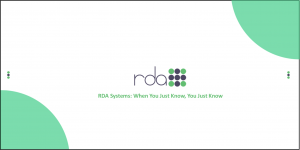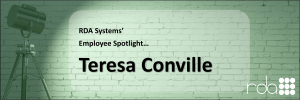If you work in municipal government or your local school district, you understand the importance of cash flow management as you plan and manage the inflow and outflow of your organization’s money.
A cash flow model can include everything from income to expenditures to assets to liabilities. In principle, when you understand how much money is available to your organization at any given time, you can conduct business, schedule purchases, and fund all organizational activities as needed.
Good cash flow management allows you to optimize investments to make the best use of taxpayer money. It also identifies various financial scenarios to forecast outcomes and make informed decisions. It minimizes liabilities, avoids running out of money, and keeps tabs on your organization’s overall financial health.
In this article, we’ll examine the challenges to good cash flow management for both local governments and school districts, as well as various cash flow solutions and best practices available to your organization.
Cash Flow Challenges for Local Governments and School Districts
Local government cash flow consists of a variety of regular, seasonal, and lump sum inflows and outflows. For example, utility bills and payroll may be paid out monthly while large construction projects may only occur in the summer months. Conversely, the local government may be required to pay annual insurance premiums or even unexpected expenses in one lump sum.
Revenue can flow into the municipality in regular, seasonal, lump-sum, and unexpected ways, as well. However, many local governments have a limited number of revenue streams. This requires disciplined management of cash flows.
If adequate cash flow is lacking and needed money is unavailable, the government may need to postpone projects, incur penalties for late payments, borrow money, or fail to deliver services. Unlike businesses, local governments cannot turn to bank loans or temporary closures when the cash runs out.
Thus, it is best to plan, forecast, monitor, and manage cash flow long before this occurs.
The same is true for school districts, although their cash flow problems are different. School districts receive 40-60% of their revenues from property taxes, which are distributed once or twice a year. Typically, the second largest source of revenue for school districts is state aid payments. Combined with property taxes, state aid payments cover up to 90% of total district revenue.
Most school districts can easily forecast both the timing and the amount of aid they will receive each year, which enables the creation of a cash flow schedule. However, there are instances when expenditures exceed forecasted needs, and districts are required to borrow working capital.
In general, as school districts make use of the historical data at their disposal, as well as the information made available to them for the current year, they will be able to make informed budgeting decisions.
Cash Flow Solutions and Best Practices
Solutions to cash flow problems involve dedicated cash flow monitoring and the kind of best practices you would expect for any organization seeking good cash flow management. When creating a cash flow model, consider the following:
Active Cash Flow Monitoring
- Determine current cash on hand
- What is restricted for specific purposes?
- What is set aside for the renewal and replacement of equipment, facilities, contingencies, and emergencies?
- What cash is unrestricted?
- What reserves and other balances can be invested longer term?
- Perform cash flow analysis
- Identify and monitor receipts/revenues and disbursements/expenditures
- Determine where you can increase revenue or cut expenses
- Review historical data
- Establish timing
- When do you expect to receive tax receipts, revenue, intergovernmental transfers, debt issuances proceeds, etc.?
- When will you need to pay for the costs of operations, interest on debt, capital expenses, services provided by other entities, insurance benefits, and other expenditures?
- Utilize bank reports and/or automated financial management systems
- This will allow you to review account balances, check clearing activity, make transfers between accounts, reconcile accounts, monitor cash balances for more effective investing, move money to cover disbursements, etc.
Increase the Efficiency of Collections and Deposits
- Increase billing frequency
- Increase ease of billing
- Accept credit and debit cards
- Increases certainty of collection
- Enhances the customer experience
- Reduces return check processing
- BUT there are usually transaction fees and administrative fees
- Use a municipal or third-party vendor website to accept payments of penalties, rents, rates, taxes, fees, interest, or other charges. (Set up a contract for the third-party vendor to receive such payments on behalf of the local government.)
- Implement remote deposit capture (RDC) to allow for remote check deposit
- Decrease in-person check payments to alleviate the administrative burden
- Accept credit and debit cards
- Set up a bank contract for direct receipt collection
- Set up a lockbox contract stipulating that the bank can process paper-based payments for the local government
- Speeds up payment processing and availability of funds
- Provides timely information
- Eliminates preparation of bank deposit slips and trips to the bank
- Helps segregate the collection duties from the billing and reconciliation functions
- Makes sure the bank follows statutory requirements
- Set up electronic funds transfer (EFT) with the bank to receive payments from the state and other entities
- Create standard operating procedures for all cash flow-related tasks
- Use cash management technologies to speed up the recording and depositing of receipts
- Set up a lockbox contract stipulating that the bank can process paper-based payments for the local government
Optimize the Timing of Disbursements
- Hold cash as long as possible prior to disbursement so that it can earn more interest (without incurring late fees)
- Identify vendors offering early-payment discounts
- Pay on the due date
- Use online banking and EFTs to optimize disbursement timing
Maximize Interest Earnings
- Have a formal investment policy
- Hold all cash in interest-bearing accounts
- Keep infrequently disbursed funds in long-term investments with higher interest rates
- Consolidate accounts to minimize bank fees
- Request proposals from banks that may have a better offer
Meet all Legal Requirements
- Consult with legal counsel to review all service provider agreements
- Ensure that EFT contracts meet legal conditions
- Follow investment rules/policies
- Check that the use of cash management technologies is authorized by governing bodies
- Prepare and submit all reports and budgets as required by law
- Look for ways to simplify laws at the local level so that government entities can incorporate digital cash flow management solutions and collaborate with software providers.
Establish Internal Controls for Cash Management Technology
- Governing board (policies)
- Management (designing and implementing control procedures)
- IT (providing a secure computing environment)
- Poor controls over online banking increase the risk of cyber-fraud and financial losses that may not be recoverable
- IT best practices involve building successive layers of defensive mechanisms (defensive-in-depth strategy), such as anti-virus, anti-spyware, adware protection software, current software, firewalls, active monitoring, changing login information, advanced authentication techniques, etc.
- All other staff (following established procedures)
- Determine who will authorize, approve, transmit, and record e-transactions
Conclusion
Having the right tools to monitor cash flow, forecast, plan, and execute solutions makes all the difference. Technological advancement has provided local governments and school districts with the tools they need to improve the capacity and efficiency of their cash flow management. These technologies help reduce costs and identify cash flow problems before they occur.
RDA provides not only award-winning consulting services but cloud-based software that will allow your organization to grow and adapt to its evolving needs. Learn more about how RDA can help your organization digitize.





